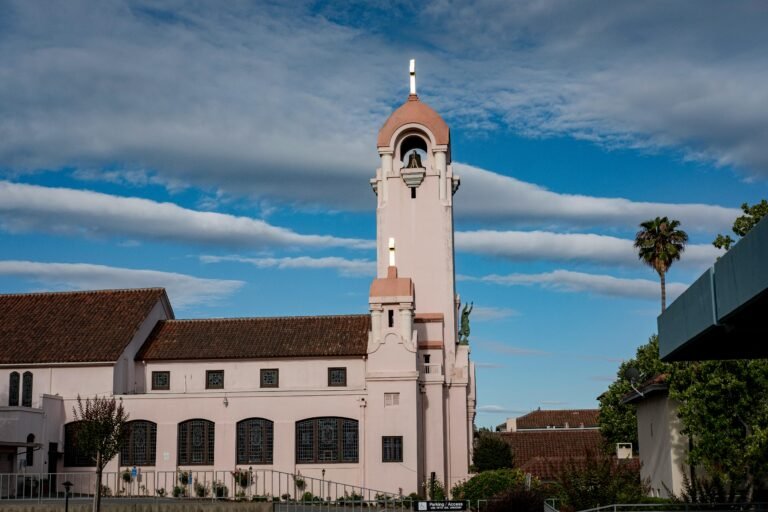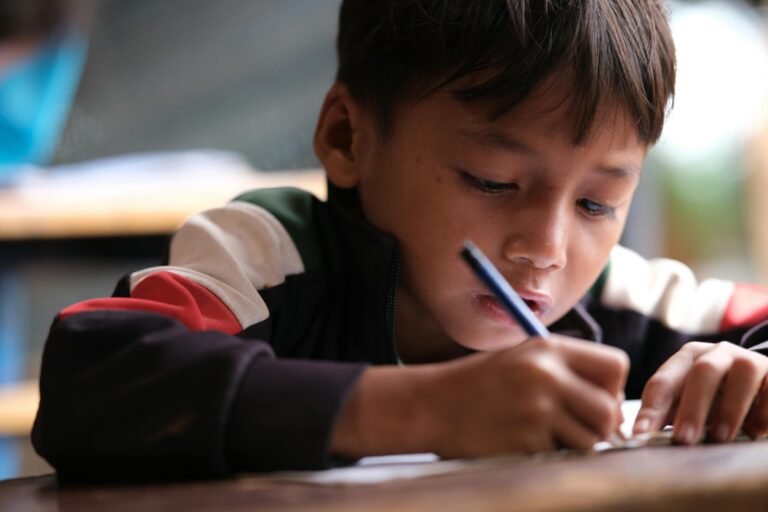The Mission San Gabriel Arcangel
Discover the rich legacy of Mission San Gabriel Arcangel – one of the most historically significant landmarks in Southern California. From its founding in 1771 to its role in shaping the Los Angeles region, this iconic mission offers a window into California’s colonial past. Learn about Native American history, cultural heritage and the relevance of the mission today.
Introduction
Known as the birthplace of the Los Angeles region, the Mission San Gabriel Arcangel served as the foundation for the communities that would later make up the Los Angeles area. The mission was especially prosperous due to it’s strategic location, earning itself the name ‘Pride of the California Missions’.

History
Founded on September 8, 1771, by Spanish missionaries, Mission San Gabriel Arcangel was the fourth of California’s 21 missions. Originally located near the Santa Ana River, what is now Montebello, the mission was relocated in 1775 to its current location after major flood damage. It’s new location, near the Rio Hondo and fertile soil, allowed the mission to become one of the most successful in the region.
During it’s peak in the early 1800s, Mission San Gabriel housed over 1000 native American Neophytes, from the Tongva (Gabrielino) tribe. It produced wheat, corn, beans, wine, and olive oil, all of which had an important part in it’s trading.
However, the mission’s prosperity came at a significant cost. The Native Americans, who were converted and brought into the mission systems, faced harsh conditions. From forced labor to loss of culture & disease, their populated were diminished fast. The impact is now forever a part of the mission’s complex legacy.
Throughout the 20th and 21st centuries, Mission San Gabriel Arcangel had countless restoration efforts. As of now, it is considered a California Historical Landmark and is included in the National Register of Historic Places. The mission has had massive damage from earthquakes over the years, and most recently survived a devastating fire in July 2020 that destroyed the roof and damaged parts of the church.
Today, Mission San Gabriel Arcangel functions as a Catholic parish, museum, and educational site, attracting visitors from all around the world. Tour guides and special events are also held at the site. The mission continues to serve as a reminder of California’s layered and complex past, playing a vital role in the cultural heritage of the San Gabriel Valley.

10 Interesting Facts About the Mission
- The original Mission was designed by Father Antonio Cruzado, born in Cordoba
- The church was eventually moved three miles from it’s original location, to it’s present location currently
- A major earthquake in 1987 prompted for repairs and reinforces to the church
- Over 6000 Indians are buried beneath, with Crucifex’s on the walls set as a memorial
- The Mission introduced grape growing to California, forever changings it’s food culture
- Located 20 minutes away from Los Angeles
- Named after arcangel Gabriel
- The Mission is the site of the first grapes and oranges grown in California
- The Mission is considered the birthplace of Los Angeles, as original settlers walked the path to LA from the mission.
- The Mission was the most prosperous of all the missions, mainly due to it’s strategic location
San Gabriel Mission Schools
San Gabriel Mission Elementary School (SGMES)
Established in 1912, the San Gabriel Mission Elementary School opened its doors with just four sisters, run by Sister Teresa Meyer as the principal, they faced many difficulties in their early days. It’s stated in the annals of that year ‘135 students, two teachers, no books, no blackboards… We had to make the best of it’.
By 1914, a lot of the students in the school were poor and hungry, therefore the school decided to provide free lunch, tuition, and books. All in the effort to further the education of the area. Eventually, blackboards and books were acquired as well.
Although the beginning was not without adversity, by 1931, the oldest existing building today, the Spanish style arcade was completed. Along with it came 5 classrooms, an auditorium, and a cafeteria.
Today, SGMES is dedicated to academic excellence through thorough curriculums. As a faith-based community, SGMES and it’s staff are committed to educating and preparing each child to make meaningful contributions to the world. While community service, worship, and dedication to god is practiced, the school upholds high standards of education to ensure a bright future for everyone!

San Gabriel Mission High School (SGMHS)
Under the direction of the Claretian Fathers and Dominican Sisters of Mission San Jose, San Gabriel Mission High school opened n 1949 as a co-institutional school. The freshman class included 119 girls and boys. The school’s colors were selected as green and silver, signifying hope and sterling worth. Their mascot, pioneers, sticks close to the Mission’s roots.
When the Claretians withdrew from the school, the High School became an All-Girls school in the fall of 1971. SGMHS continued to grow as in the late 90’s they would go on to add a chemistry lab, a physical science lab, a chapel, and an art biology lab. Renovations & upgrades were also done to exercise rooms, auditoriums, and a dance studio.
Today, the young women at SGMHS nurture the rich history and traditions that come from the school. Their goal of creating a faith driven community to provide a safe environment for young women to grow into spiritual, intelligent, & creative leaders has been their mission statement from the start.
FAQs
What is the Mission San Gabriel Arcangel famous for?
The mission is most famous for its rich history and architectural features. Including but not limited to, the impact it’s hard in the creation of Los Angeles and the San Gabriel Valley.
What Indian tribe lived at the Mission San Gabriel Arcangel?
The Tongva, also known as Gabrielino, were the indigenous people who lived at the mission. Today they are referred to as the Kizh nation.
What happened to the Mission San Gabriel Arcangel?
In July 2020, a fire severely damaged the Missions roof and caused major damage to the church. The mission was closed for three years for restoration and finally reopened to the public on July 1, 2023.
📍 Final Thoughts from a Local Realtor
As a realtor who has lived in Monterey Park for all his life, I think it’s important to understand all of the cultural importance the San Gabriel Mission Arcangel offers to the San Gabriel Valley.
The mission isn’t just a historical site, it’s the heart of San Gabriel’s identity, and it’s legacy continues to shape the culture and charm of the city.
Whether you’re interested in learning the rich history of San Gabriel’s Mission, or you’re doing a research paper for your homework haha, there is so much more to learn from these historical sites everyday.
Have questions about specific neighborhoods, I’d love to help.


